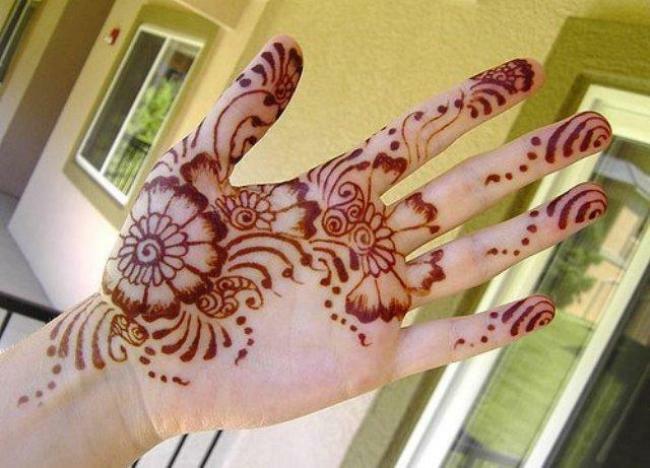source{google.com.pk}
Henna (Lawsonia inermis, also known as hina, the henna tree, the mignonette tree, and the Egyptian privet) is a flowering plant and the sole species of the Lawsonia genus. The English name "henna" comes from the Arabic pronounced or, colloquially The name henna also refers to the dye prepared from the plant and the art of temporary tattooing based on those dyes. Henna has been used since antiquity to dye skin, hair, and fingernails, as well as fabrics including silk, wool, and leather. The name is used in other skin and hair dyes, such as black henna and neutral henna, neither of which are derived from the henna plant. Historically, henna was used for cosmetic purposes in the Roman Empire, Convivencia-period Iberia and Ancient Egypt, as well as other parts of North Africa, the Horn of Africa, the Arabian Peninsula, the Near East and South Asia. It was also popular among women in 19th-century Europe. Today, bridal henna nights remain an important tradition in many of these areas. The bride gets her hands and feet done with intricate mehndi designs for hands are usually drawn upon until the elbow and feet up to the calf muscles. This is a fun time for all the young unmarried girl friends of the bride.Use of Henna As A Beauty Agent Women in Pakistan are generally very conservative as beautifying themselves may classify them as vain and attract negative attention and even castigation from the religious heads and male family members. therefore is used as a natural beautifying agent. One way is by drawing exceptionally beautiful designs on the hands and feet during festivals and other family celebrations; and another way is to apply to the hair. Henna is an excellent conditioner for hair which encourages the growth and the natural bounce of the hair. For women who have premature white hair, it provides an excellent way to hide it as Henna applied regularly gives a dark red hue to the hair. When used for weddings and other special occasions women take the help of professional Henna designers who have learnt a great number of designs for hands and legs. The hands are decorated both the sides (palms and opposite side) and it sometimes takes more than three hours for application only. The paste once applied needs to be kept as long as possible on the hands and legs; the longer it is kept, the better the color would be. The belief is that the darker the color of the mehndi on the hands the more the husband would love the wife. Henna is a tall shrub or small tree, standing 1.8 to 7.6 m (5 ft 10 in to 24 ft 10 in) tall. It is glabrous and multi-branched, with spine-tipped branchlets. The leaves grow opposite each other on the stem and are glabrous, sub-sessile, elliptical, and lanceolate (long and wider in the middle; average dimensions are 1.5–5.0 cm x 0.5–2 cm or 0.6–2 in x 0.2–0.8 in), acuminate (tapering to a long point), and have depressed veins on the dorsal surface. Henna flowers have four sepals and a 2 mm (0.079 in) calyx tube, with 3 mm (0.12 in) spread lobes. Its petals are obvate, with white or red stamens found in pairs on the rim of the calyx tube. The ovary is four-celled, 5 mm (0.20 in) long, and erect. Henna fruits are small, brownish capsules, 4–8 mm (0.16–0.31 in) in diameter, with 32–49 seeds per fruit, and open irregularly into four splits.
Henna For Hand Henna Hands Pictures Images Pics

Henna For Hand Henna Hands Pictures Images Pics

Henna For Hand Henna Hands Pictures Images Pics

Henna For Hand Henna Hands Pictures Images Pics

Henna For Hand Henna Hands Pictures Images Pics

Henna For Hand Henna Hands Pictures Images Pics

Henna For Hand Henna Hands Pictures Images Pics

Henna For Hand Henna Hands Pictures Images Pics

Henna For Hand Henna Hands Pictures Images Pics

Henna For Hand Henna Hands Pictures Images Pics

Henna For Hand Henna Hands Pictures Images Pics
No comments:
Post a Comment